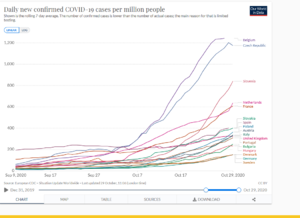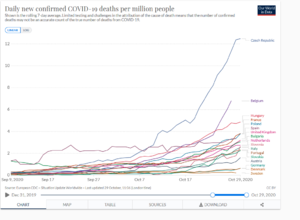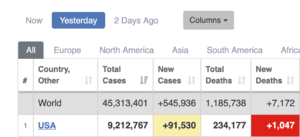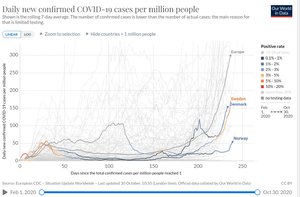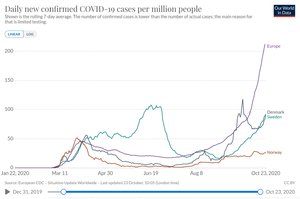Er nok like greit å venne seg til pandemier hvis vi ikke greier å stoppe voldtekten av vår natur.

 ipbes.net
Bl.a.
ipbes.net
Bl.a.
COVID-19 is at least the sixth global health pandemic since the Great Influenza Pandemic of 1918, and although it has its origins in microbes carried by animals, like all pandemics its emergence has been entirely driven by human activities, says the report released on Thursday. It is estimated that another 1.7 million currently ‘undiscovered’ viruses exist in mammals and birds – of which up to 850,000 could have the ability to infect people.
“There is no great mystery about the cause of the COVID-19 pandemic – or of any modern pandemic”, said Dr. Peter Daszak, President of EcoHealth Alliance and Chair of the IPBES workshop. “The same human activities that drive climate change and biodiversity loss also drive pandemic risk through their impacts on our environment. Changes in the way we use land; the expansion and intensification of agriculture; and unsustainable trade, production and consumption disrupt nature and increase contact between wildlife, livestock, pathogens and people. This is the path to pandemics.”
Pandemic risk can be significantly lowered by reducing the human activities that drive the loss of biodiversity, by greater conservation of protected areas, and through measures that reduce unsustainable exploitation of high biodiversity regions. This will reduce wildlife-livestock-human contact and help prevent the spillover of new diseases, says the report.

IPBES #PandemicsReport: Escaping the 'Era of Pandemics'
Intergovernmental Science-Policy Platform on Biodiversity and Ecosystem Services (IPBES)
COVID-19 is at least the sixth global health pandemic since the Great Influenza Pandemic of 1918, and although it has its origins in microbes carried by animals, like all pandemics its emergence has been entirely driven by human activities, says the report released on Thursday. It is estimated that another 1.7 million currently ‘undiscovered’ viruses exist in mammals and birds – of which up to 850,000 could have the ability to infect people.
“There is no great mystery about the cause of the COVID-19 pandemic – or of any modern pandemic”, said Dr. Peter Daszak, President of EcoHealth Alliance and Chair of the IPBES workshop. “The same human activities that drive climate change and biodiversity loss also drive pandemic risk through their impacts on our environment. Changes in the way we use land; the expansion and intensification of agriculture; and unsustainable trade, production and consumption disrupt nature and increase contact between wildlife, livestock, pathogens and people. This is the path to pandemics.”
Pandemic risk can be significantly lowered by reducing the human activities that drive the loss of biodiversity, by greater conservation of protected areas, and through measures that reduce unsustainable exploitation of high biodiversity regions. This will reduce wildlife-livestock-human contact and help prevent the spillover of new diseases, says the report.






